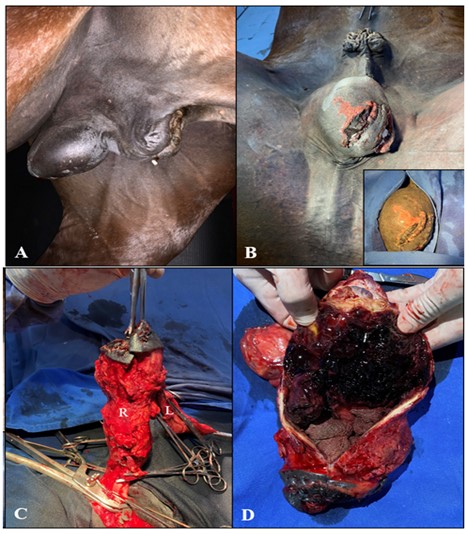Funiculitis causing sepsis-associated laminitis in a Mangalarga Marcha-dor gelding
Authors: Jéssyca Lauar Fagundes Lino, Daniel Carneiro Fagunes Lino, Simone Perecmanis, Rita de Cássia Campebell, Antonio Carlos Lopes Câmara
Ger. J. Vet. Res
2024.
vol. 4, Iss. 1
pp:55-60
Doi: https://doi.org/10.51585/gjvr.2024.1.0074

Abstract:
Castration is one of the most common surgical procedures performed in equine practice, and potential complications may range from mild to life-threatening conditions. This paper aims to report clinical and laboratory features, treatment, and long-term follow-up information in a case of funiculitis causing sepsis-associated laminitis and acute renal failure (ARF) in a Mangalarga Marchador gelding. A 5-years-old Mangalarga Marchador gelding was referred for hospital care after seven days of an open orchiectomy approach on farm-setting. Physical examination revealed hyperemic mucous membranes, dehydration, tachycardia, scrotal swelling with a foul-smelling serousanguinous discharge, increased hoof temperature and digital pulse amplitude, and lameness. Laboratory findings included leukocytosis by neutrophilia, hypoalbuminemia, high creatinine, and urea levels, and an increased number of bacteria, leukocytes, and hyaline cylinders on urine analysis. After three days of intensive care, the horse underwent general anesthesia for scrotal ablation and resection of the infected spermatic cord stumps. Microbiological assays revealed Streptococcus spp. and a multi-resistant Escherichia coli. This report highlights uncommon post-castration complications in a Mangalarga Marchador gelding as a consequence of septic funiculitis. Furthermore, the microbiological isolation of a multi-resistant E. coli strain raises concerns about the indiscriminate use of antibiotics in equine practice.
Keywords:
Castration, Orchiectomy, Scirrhous cord, Septic funiculitis
Statistics:
Article Views: 503
PDF Download: 31